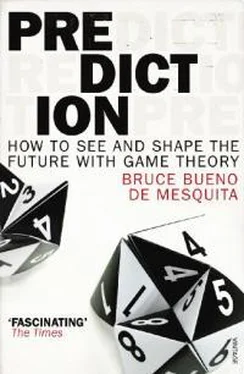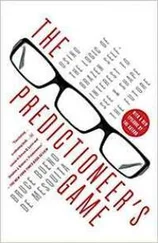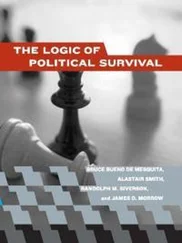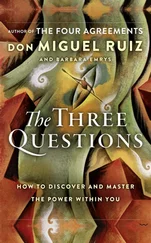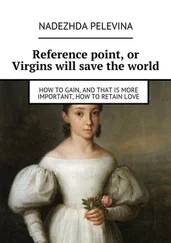Rostenkowski was positioned at a point that had a great mountain of powerful support behind it, he had enough salience to influence people (but not so much as to come across as excessively intense and committed), and he was surrounded by small, fragmented clusters of influence scattered across many positions with relatively little clout to withstand his pressure. In that environment (according to the model’s logic), Rostenkowski was positioned as a leader who could and would move people to his position. He found the right arguments and the right opportunities and the right targets to cajole or coerce so that the prospective winning position was located close to where he wanted it to be. He didn’t go to the winning position, he brought it to him. Thus, on one health care issue after another, because he exerted so much control over the money, what Rostenkowski wanted, Rostenkowski could pretty much get. Except, ah, except for those seventeen felony counts. They were not part of my analysis, they were truly unforeseen , and they made all of the difference. The felony counts were exogenous shocks—that is, the product of outside, unexamined forces unrelated to health care issues.
The political world and the business world are vulnerable to unanticipated shocks. With the Rostenkowski experience in hand, I realized I needed to have a way to anticipate unpredictable events so that I could take them into account. But how can you predict the unpredictable? Well, although it is impossible to anticipate unpredictable developments, it is possible to predict how big an “earthquake” is needed to disrupt a prediction. I worked out how to predict the magnitude of disruptions even if I could not know their exact source. We’ll look at how I have since incorporated this element into my work.
How I got to the ever-evolving solution is an interesting story in itself. Around the time that Dan Rostenkowski’s troubles led me to think about random shocks, John Lewis Gaddis, a world-renowned historian, now at Yale University but then at the University of Ohio in Athens, Ohio, invited me to spend a week with him and his students. Gaddis had written a paper in 1992 claiming that international relations theory was a failure because it didn’t predict the 1991 Gulf War, the demise of the Soviet Union, or the end of the cold war. Two well-known political scientists, Bruce Russett at Yale University and James Ray at Vanderbilt University, responded that Gaddis had not taken my predictive rational-choice work into account. 1They contended that this body of work warranted being viewed as a rigorous scientific theory rather than just some exercise in fitting data to outcomes after they were known.
Gaddis paid attention to the claim by Russett and Ray that he had overlooked a relevant body of research. That is what led him to invite me to spend time with him and his students. He was a doubter, and he made no bones about that. Southern gentleman that he is, he couched his doubts in the most civil way; still, I was going to Athens, Ohio, with the expectation on John’s part that his students and he were going to expose my modeling as some sort of hocus-pocus.
I agreed to apply my method to any policy problem that Gaddis and his students agreed on, although I imposed two restrictions. First, they had to know enough about the issue they chose to be able to provide me with the data needed for the model, since I was unlikely to be an expert on the issue and anyway it would be best if the data came from doubters. Second, it had to be an issue for which the outcome would be known over a period ranging from a few months to a year or two, rather than something that would not be known for so long that they couldn’t judge in a timely fashion whether my model’s logic had gotten it right or not. The hope was to look at something we could then correspond about. They would know I had made predictions before the fact, and, the timing being right, they would be able to look back at what I had said and compare it to what actually happened later.
They chose to have me analyze what became the 1994 baseball strike. I made detailed predictions about such matters as whether there would be a strike (the model said yes), whether there would be a World Series that year (the model said no), and whether President Clinton’s eventual threatened intervention, which was predicted by the model, would end the strike (again, the prediction was no). I did an in-class interview with the two or three students who were “experts” on baseball, and then ran my computer model in front of all the students. I provided an analysis of the results on the spot. That way the students knew that nothing more went into my predictions than the data collected in class and the logic of my model. The predictions, as it happened, turned out to be correct.
Shortly before I left Athens, Professor Gaddis suggested that I write a paper applying the model to the end of the cold war. In particular, he proposed that I investigate whether the model would have correctly predicted the U.S. victory in the cold war based only on information that decision makers could have known shortly after World War II ended. That is, he asked for a sort of out-of-sample prediction of the type I used to validate the fraud model. And so my analytic experiences with Dan Rostenkowski and with the baseball strike came together to provide a motivation and a framework for assessing the end of the cold war. My work on this project, using only information available in 1948, would help me incorporate and test my new design for external shocks within a model, which, of course, I felt compelled to develop on account of my health care debacle.
I used Gaddis’s proposal and my awful experience with health care to think through how to predict the consequences of inherently unpredictable events. I put together a data set that my model could use to investigate alternative paths to the end—or continuation—of the cold war. The data on stakeholder positions were based on a measure of the degree to which each country in the world as of 1948 shared security interests with the United States or the Soviet Union. The procedure I used to evaluate shared interests was based on a method I developed in publications in the mid-1970s. 2The procedure looks at how similar each pair of countries’ military alliance portfolios are to each other from year to year. Those who tended to ally with the same states in the same way were taken to share security concerns, and those who allied in significantly different ways (as the United States and the Soviet Union did) were taken to have different, perhaps opposed, security policies and interests.
The correlation of alliance patterns as of 1948 was combined with information on the relative clout or influence of each state in 1948. To asses clout I used a standard body of data developed by a project then housed at the University of Michigan called the Correlates of War Project. Those data, like my measure of security interests, can be downloaded by anyone who cares to. They are housed at a website called EUGene, designed by two political science professors who were interested in replicating some of my research on war. 3
Each state in the data set—I focused on countries rather than individual decision makers to keep the data simple and easy to reproduce by others—was assigned a maximum salience score to reflect the urgency of security questions right after the Second World War. Combining these data to estimate expected gains and losses from shifting security policies, the model was run on these data for all country-pair combinations one hundred times. Each such run consisted of fifty “bargaining periods.” The “bargaining periods” were treated as years, and thus the model was being used to predict what would happen in the cold war roughly from 1948 until the end of the millennium.
Читать дальше
